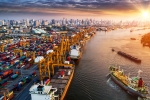GCC Capital Markets Watch - Q1 2022
Q1 2022 Overview
The economic instability and uncertainty exacerbated by the Ukraine-Russian crisis has negatively impacted many IPO markets across the world, although the GCC region has been relatively well shielded. Compared to Q4 2021, Q1 2022 had 50% more IPOs but raised approximately 6% less proceeds. GCC IPO performance in Q1 2022 outperformed that of Q1 2021 in terms of both the number of IPOs and the total IPO value. There were 15 IPOs across the region raising USD4.9 billion, compared to 10 IPOs raising USD5.2 billion in Q4 2021 and 5 IPOs raising USD571 million in Q1 2021. Increase in oil and gas prices, further easing of health-related restrictions and the introduction of new regulations and government incentives contributed to the growth in capital markets activity in the region. Saudi Arabia’s Tadawul leads the GCC region, hosting 13 of the 15 IPOs and generating 78% of the proceeds. The Saudi Arabian capital markets also caught international headlines, ranked 4th globally by IPO proceeds and accounting for 6% of the global IPO proceeds. One IPO took place on the ADX in the United Arab Emirates and the remaining one was listed on Oman's Muscat Stock Exchange.
On the other hand, although still active, the debt markets had lower activity in Q1 2022 compared to Q4 2021 and Q1 2021. Similar to the recent quarters, the sovereign fixed income listings exceeded the corporate listings with KSA recording the largest sovereign listing for the quarter. The largest corporate listing in the quarter took place in UAE.
GCC Q1 2022 highlights
Top 3 GCC IPOs in Q1 2022 by proceeds
- Exchange
- Tadawul
- Pricing date
- 23-Mar-22
- Money raised
- USD 1.4bn
- Exchange
- ADX
- Pricing date
- 8- Feb-22
- Money raised
- USD 1.1bn
- Exchange
- Tadawul
- Pricing date
- 16-Feb-22
- Money raised
- USD 819m
Regional Activity
Q1 2022 was the most active quarter since Q1 2020 in terms of both the IPO volume and proceeds raised.
USD3.8 billion was raised in the Kingdom of Saudi Arabia through 13 IPOs which account for circa 87% of the Q1 2022 GCC IPO proceeds. Al Nahdi Medical Co raised the most proceeds for the quarter in the region at USD1.4 billion. Elm Company came third with USD819 million. Other notable listings include Al-Dawaa Medical Services Co. and Jahez International Company for Information and Technology raising USD496 million and USD428 million respectively.
Market consensus is that the IPO activity in Tadawul will continue into the near future as rising oil prices continue to stimulate the country’s economy. The Q2 2022 pipeline for KSA is strong with several companies already in advanced stages of the IPO process.
Abu Dhabi Ports listed on ADX in February 2022, raising USD1.1 billion. This was the second largest listing in the region in Q1 2022. Q2 2022 IPO activity in the UAE is expected to be significantly higher with the listing of Borouge and DEWA already completed as of June 2022, raising in excess of USD9 billion. UAE’s SPAC listing also debuted on the ADX with the listing of ADC Acquisition Corporation on 12 May 2022.
In order to enhance capital markets activities, the ADX has committed AED5 billion (USD1.4 billion) to assist private sector companies through the IPO process. The fund will invest in 5-10 private sector companies per year with the aim of encouraging private sector companies, with a focus on SMEs, to list on the exchange. The UAE has also permitted the listing of cooperative societies. This initiative is aimed at growing the cooperatives sector, to enhance its current contributions of nearly AED8 billion (USD2.2 billion) to the national economy further.
Barka Desalination, Oman’s largest desalination company, listed on the Muscat Stock Exchange, raising USD12 million in proceeds. This is the first IPO in Oman under the Rules for Pricing Mechanism in Public Offering of Shares introduced by its Capital Market Authority in 2021, which specifies the methods and procedures to be followed for the determination of the prices of shares in public offerings. The Omani capital markets are expected to become active. Following a similar move in Dubai, the Sultanate of Oman has announced the country’s plan to list 35 state-owned companies in the next five years with at least two oil companies expected to list in 2022.
There were no Bahrani listings in Q1 2022. However the chair of Bahrain Bourse indicated during the 2022 annual conference of the Arab Federation of Capital Markets that five state-owned companies will be listed this year.
There were also no listings in Kuwait in Q1 2022. However, family-owned automotive business Ali Alghanim has set its initial public offering price as it plans to list on Boursa Kuwait in Q2 2022. Boursa Kuwait has indicated that more family businesses will have IPOs soon, followed by the listing of state controlled entities.
Overall, the GCC equity capital markets had a strong performance in Q1 2022, building on the momentum in Q4 2021, and is expected to continue into the coming quarter.
In contrast to the activity in IPOs, debt capital markets activity in Q1 2022 has shown signs of tapering, especially the bond market, with fewer bonds issued in the region. This decrease was anticipated as interest rates increased and the GCC bloc benefited from increased liquidity due to rising oil prices.
Similar to Q4 2021, sovereign issues significantly outnumbered corporate issues, both in terms of number of listings and value. The largest bond listing this quarter was issued by the government of Bahrain and was worth USD395 million.
The biggest sukuk issuer in Q1 2022 was the government of the Kingdom of Saudi Arabia, listing 6 sukuks worth USD20 billion in total. The KSA government has nearly doubled its debt listing in terms of both value and volume compared to Q4 2021 as part of its program to refinance around USD12 billion of debt.
Nasdaq Dubai continues to be a popular exchange for corporate debt issuance. The largest corporate bond and sukuk issuances for the quarter were Capital Bank of Jordan’s USD100 million bond listing and Dubai Islamic Bank’s USD750m sukuk listing, respectively, both listed on Nasdaq Dubai.
GCC equity markets performance by cumulative total return since 1 April 2020
Source: Eikon (Thomson Reuter), PwC Analysis
Share price performance of 2019, 2020, 2021 and 2022 GCC IPOs* by sector, relative to the respective all share index, from the IPO date to 31 March 2022
Source: Eikon (Thomson Reuter), PwC Analysis
The percentage figures shown in the chart above are the average share price movements of the newly listed companies under each sector relative to the index performance of the respective exchange.
* The IPOs of Al Moammar Information System Company, Sprinkle Holding BSC and Oman reinsurance have been excluded due to insufficient data.
** The increase is mainly contributed by an increase of 2555% in the share price of Boursa Kuwait Securities Company (K.P.S.C.). If Boursa Kuwait Securities Company (K.P.S.C.) is excluded, the increase would be 16%.
Global IPO performance
In contrast to the GCC, the global capital markets have been significantly affected by the conflict in Ukraine and the associated inflationary risks and economic uncertainty. There were 286 IPOs in Q1 2022 generating proceeds of USD56.1 billion, circa 64% less than Q1 2021 in terms of both number of IPOs and IPO proceeds, and even a greater reduction when compared to Q4 2021. Volatility levels have returned to those experienced in 2020 in the midst of the global pandemic with global indices ending the first quarter lower than the one before. High volatility materially stalled IPO activity in many markets.
Predicting a timescale for the return of global IPOs is challenging at this point. Significant investor liquidity remains, but inflationary risks remain a heightened concern and market volatility is a significant impediment to pricing an IPO. Market sentiment is unlikely to improve until there is a clearer path for resolution in the Ukrainian conflict.
Notwithstanding the above, companies with a strong equity story that are looking to list are preparing diligently in order to maximise the chance of success when the increasingly narrow IPO window opens up again.
Top 3 IPOs in Q1 2022 by proceeds
- Exchange
- Korea Exchange - KOSPI
- Pricing date
- 14-Jan-22
- Money raised
- USD 10.7bn
- Exchange
- Sci-Tech Innovation Board (STAR Market)
- Pricing date
- 14-Jan-22
- Money raised
- USD 1.6bn
- Exchange
- Tadawul
- Pricing date
- 22-Mar-22
- Money raised
- USD 1.4bn
The Asia-Pacific region took the lead in Q1 2022 by both IPO volume and proceeds, and is the only region with year on year increase. The region generated USD34.2 billion from 153 IPOs. The listing of LG Energy Solution Ltd. raised USD10.7 billion, which was the largest IPO globally for the quarter and South Korea’s largest ever IPO. The listing of Jinko Solar Co Ltd in China, with proceeds of USD1.6bn, was the second largest IPO in the world. Together with 76 other IPOs in China in the quarter, it catapulted China to become the country raising the most proceeds (USD18.2 billion) in Q1 2022. Hong Kong SAR, though not as active as in previous quarters, had IPO proceeds totalling USD1.3 billion.
The Americas have broken its long track record of global IPO dominance in Q1 2022, moving down to second place in terms of IPO proceeds. In Q1 2022, the Americas had 86 IPOs raising USD13.9 billion, 89% of which was generated in January and February. SPAC activity represented 72% of IPO proceeds from 55 SPAC listings. The US continued to lead in SPAC listings, accounting for 86% of global SPAC IPOs, although this could be dampened going forward with the latest set of SEC regulations.
Similar to the Americas, the EMEA saw a fall in IPO activity compared to Q1 2021 and Q4 2021, with only 47 IPOs raising USD8 billion. Whilst the European IPO market has been subdued, there has been a flurry of activity in the Middle East. Saudi Arabia hosted two of the global top ten IPOs, along with 11 other listings. The listings of Al Nahdi Medical Company and Elm Co were the third and tenth largest IPO globally raising USD1.4 billion and USD0.8 billion respectively. The fifth largest IPO took place in the UAE with Abu Dhabi Ports raising USD1.1 billion. Norwegian Var Energl ASA was the only European candidate amongst the global top 10, raising USD0.9 billion on the Oslo Børs.
Global IPO activity
Top countries by % of total IPO proceeds raised in YTD 2022
How PwC can help you
At PwC, we understand that good preparation is essential to a successful IPO and debt issuance. We have experience in a wide range of international, regional and domestic IPOs and debt issuances, and can provide expert guidance from initial planning, through to execution and beyond.
IPO and debt preparation
Our IPO and debt Readiness Assessment is an early stage diagnostic review of the critical areas needed for a successful issuance. We highlight where current processes, procedures, structures and practices fall short of the requirements for a company whose securities are to be publicly traded and provide recommendations on how to address these gaps. Our assessment can be tailored to include these aspects as well as some broader areas such as business continuity and contingency planning.
IPO and debt execution
We work with issuers and their advisors to provide IPO and debt advisory and assurance services. This may include working capital reporting, financial due diligence, financial positions and prospects procedures assessment, assistance with MD&A drafting in relation to a prospectus, comfort letters and project management.
Authors
Muhammad Hassan
Capital Markets Leader, PwC Middle East

Alex Tsui
Senior Manager, Capital Markets, PwC Middle East
Contact us




Haitham Aljabry
Finance & Accounting Consulting, Partner, PwC Middle East
Tel: +966 54 732 2225







